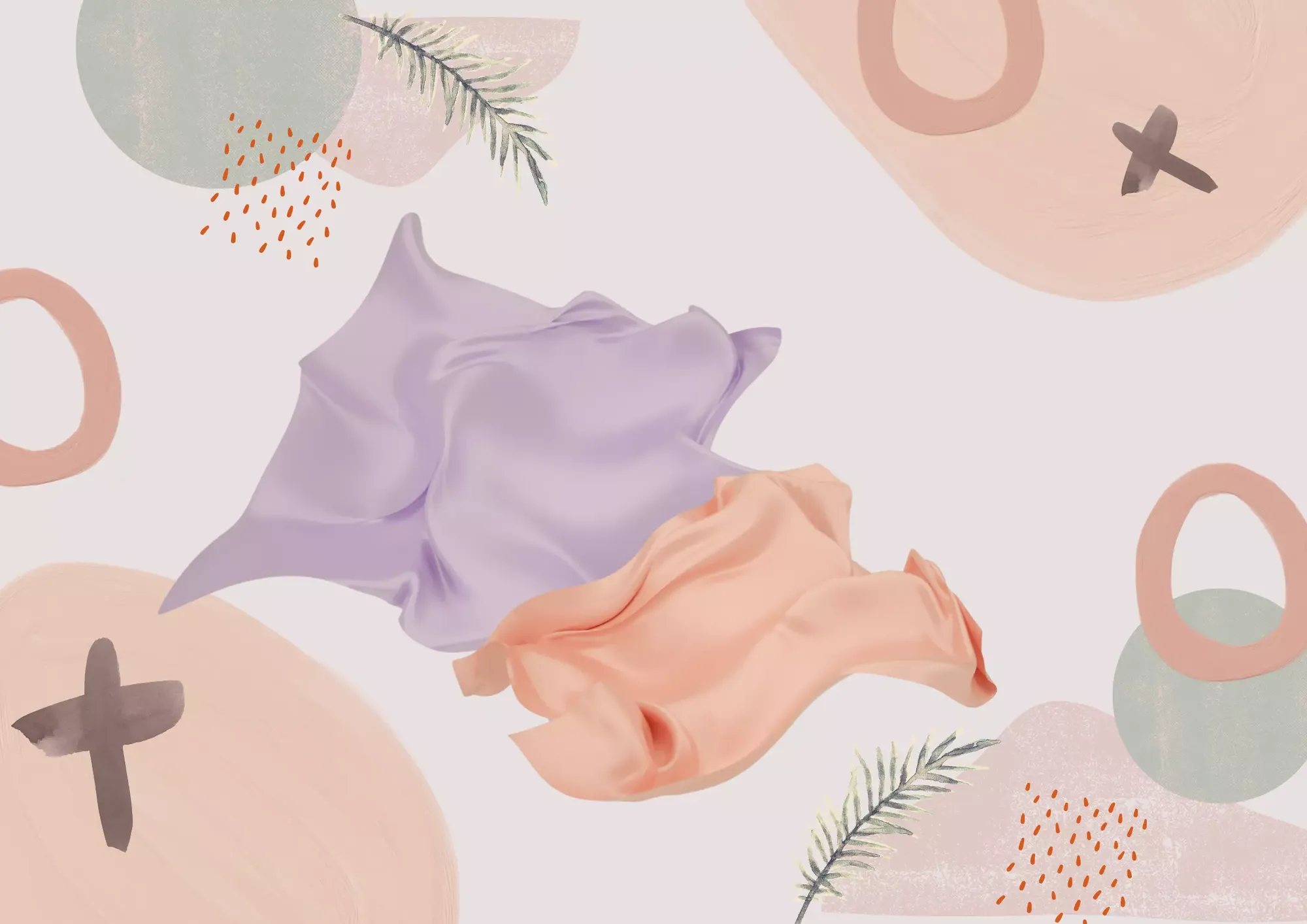Peace Silk: The Complete Guide
In recent years, the silk industry has gotten plenty of bad press for the animal and human rights abuse that is rampant in the industry. Silk is an ancient fiber and has been around for thousands of years, but the ethics of silk production are complex, and by no means is silk an ethical fabric to wear. Not only does it necessitate the deaths of thousands of animals, but silk is also produced by workers who are frequently paid less than a living wage and are frequently subject to physical and verbal abuse.
Related: What Is Soysilk?

A Primer on Traditional Silk Production
Silk production is an ancient and intricate process that begins with the silkworm laying its eggs on mulberry leaves. The first step in silk production is to remove those already-laid eggs from the leaves; this can be done either by hand or mechanically, depending on the producer's preference. Once collected, these tiny white balls of fluff are then placed into containers that are rotated frequently, to provide them with the warmth they need for hatching.
Once hatched, silkworms can be fed fresh mulberry leaves until their first molt, at which point they stop eating entirely and instead begin spinning a cocoon around themselves using two sets of glands on their head. These glands secrete a gummy substance that helps the silkworm to spin its cocoon, which is actually made up of two layers: an inner layer and an outer layer.
The spinning process takes between 14-21 days during which time the silkworm remains in its cocoon while it develops into adult form; once complete, they chew their way out of the cocoon, destroying it in the process. At this point, they are then referred to as “moths” and must be separated from any rogue worms that have not yet reached maturity; if left together these caterpillars will eat one another alive!
Once matured, the moths are placed into baskets that are then shaken to release the silk thread that is attached to their spinnerets (silk glands). The worms can produce 200 meters of silk filament in a single day, which means they only need about four days before it’s time for them to begin producing again. Once collected, this raw material must be processed because not all silk is created equal.
Generally, silkworms are harmed in the process of silk production, but there are a number of ways to minimize this harm. The worms can be allowed to live throughout their four-week life cycle and even beyond if desired.
The truth is, a majority, if not all, of moths whose cocoons are utilized to produce pure silk, will have their lifecycle violently disrupted! Their cocoons must remain unbroken, and the moth must not be allowed out.
After the silkworms emerge from their pupa, the cocoons must be 'harvested' by the family. The pupas must be boiled, steamed, or baked in a process called "stifling" to prevent them from becoming moths. After stifling, the silk thread's termination is located and the cocoon is unwound.
To create exquisite pure silk, humans have tamed the Bombyx mori moth into one that is blind and unable to fly. She lays eggs once and then dies. Before they reach maturity, we kill their offspring. This has been going on for at least 5,000 years.
Animal exploitation aside, Human Rights Watch has also reported on the extensive child abuse and slavery that exists in the Indian silk industry.
Over 350,000 children, some are as young as five years old are tasked with boiling cocoons and hauling mulberry leaf containers, while others work in factories earning $0.50 a day or less. These youngsters spend twelve or more hours each day working six and a half to seven days per week and are subject to tremendous physical or verbal abuse.
What is Peace (or Ahimsa) Silk?
Ahimsa Silk or Peace silk is a type of silk that is made allegedly without harming silkworms. Peace Silk gives you all of the same luxurious qualities as traditional Bombyx mori, but since it doesn't harm any animals in its production process, it could be considered a superior choice to regular mulberry silk. Peace and ahimsa silks are both types of tussah silk, which are cultivated from the cocoons of wild or semi-wild silk moths.
Ahimsa is a Sanskrit word that means non-violence and is considered the highest form of pacifism. This type of silk may also be referred to as wild silks, in comparison with their cultivated cousins (tussah silk). The Bombyx mori moth only produces one ounce of raw material in its lifetime; by contrast, a wild silk moth can produce up to ten times as much!
The Production of Peace Silk
In most cases, the worm is allowed to spin its cocoon before it's boiled or baked. In this case, only a small part of the insect's wing is used for spinning and no more than one-third of its body length; in fact, some producers allow them to mature fully before harvesting, killing them in the process.
Ahimsa silk producers claim to not harm any animals. It is made from the cocoons of wild or semi-wild moths who are allowed to fully mature and lay eggs; these worms will continue living until they've laid their last egg. As a result, this produces an exquisite product that offers an alternative to the traditional silkworm process.
Peace Silk is made by boiling these cocoons in water to dissolve the sericin proteins holding them together without harming any worms. This traditional process can take up to 12 hours per pound of Peace/Ahimsa Silkworm Silks and makes Peace silk much more labor-intensive than traditional silk. Peace Silk has similar properties to regular Bombyx mori silk, but is slightly less durable and can be subject to fading or shrinking if exposed to heat or humidity for extended periods of time.
The Ethics of Peace Silk
Peace silk is sustainable and does not rely on heavy pesticide use like traditional mulberry silk, but the production process is slow and labor-intensive. It also requires more dyeing than regular Bombyx mori silk since it isn't naturally white; this makes Peace Silk cost significantly more to produce than standard silks.
There is a lot of debate around the ethics of peace silk and silk in general. On the one hand, the process of manufacturing peace silk is far kinder to silkworms than the traditional, ancient production process. On the other, it still heavily involves breeding silkworms and exploiting them to make our clothing.
Another issue that needs to be addressed is that no certification bodies exist to guarantee that the criteria for ahimsa silk production are met, and there have been reports of traditional silk being marketed as "peace silk." It is It's important to remember that although sellers claim that these materials have been manufactured from cocoons collected after the moths naturally emerged, this might just be a form of greenwashing.
The question then arises, is buying peace silk even better than regular silk? The literature suggests that the production of peace silk is actually responsible for even more caterpillar deaths than ancient production practices.
While in the production of peace silk, the non-violent strategy of stifling is avoided, and hence the moths are able to climb out of the cocoons and breed, making this silk (also known as Ahimsa or Eri) a popular choice, the ultimate destiny of most adult moths is often neglected.
The farmers allow the moths to mate as a result of this, and the male moths are reused over and over until their fertility declines. Then they are no longer required - thus they are simply thrown away, allowing them to die an excruciating death. The female moths are crushed after being examined for any diseases, and all of their eggs are destroyed.
The idea behind peace silk is intriguing, and it's no surprise that many conscious consumers avoid silk while still being willing to purchase and wear peace silk. The term itself is rather enticing, especially for conscious consumers. However, the reality of the peace silk business is anything but ethical or peaceful - even though the silkworms are "set free" from their cocoon, they are still subjected to a horrible death.
The only way to truly be kind to the environment and animals is to move towards plant-based fabrics (like mushrooms!) that have low embodied energy. The truth of the matter, however, is that it is always better to reuse fabric and clothing that already exists in the environment than to create a new one.

